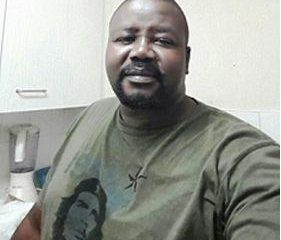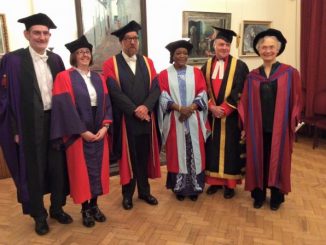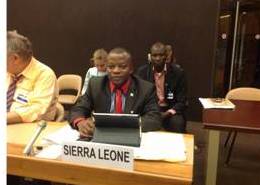
Is Sierra Leone Richly poor or Poorly Rich?
Sierra Leone has always enjoyed the paradoxical label of being one of the richest poor countries in Africa. Our country is regarded as rich and well known for its vast endowment in minerals; diamonds, rutile, bauxite, gold, iron ore, limonite, platinum, chromite, coltan, tantalite, columbite and zircon, as well as promising petroleum potential. With our wonderful climate and large swathes of arable land, we used to boast about products like rice, cocoa, coffee, oil palm, and in the recent past, piassava. With such resources for a population averaging seven million at best of times, what is our excuse for being such a poor nation?

Are we richly poor or poorly rich? However, even with such huge resources, we paradoxically rank 182 out 189, according to the 2020 Human Development Index (HDI), and shamefully low in the human development category with an HDI of 0.452. Like many other African countries, we share a diagnosis of Resource Curse; a term used to describe a paradoxical situation in which a country underperforms economically, despite being home to valuable natural resources.
No one will doubt the impact the decade long civil war, the Ebola pandemic, the mudslides and currently the Covid pandemic, as nature and man made factors have connived to condemn our country to the back of beyond poverty. However, using these alone as reasons for our economic demise may just be convenient excuses. We may disagree that our country is rich; potentially, but we cannot deny how we have inexcusably connived, by man made means to relegate our country onto the low rungs of the world poverty scale. So how did we get here and how did we do it?
There is no single reason or straightforward answer for this. Interestingly, we are not short of new vocabularies and phrases to express our national economic demise. Phrases like “de gron dry”, “angry borku o” “de game don big”, “de game lock pan me” etc., have insidiously found a way into our local parlance. While the older generation use fond memories to compare and long for the old days, we still hold on to what is increasing looking like a delusion that our country is still rich. On the other hand, the younger generation, just weaned from the ravages of war and the pandemics, will go green with envy of the good old days. Let us take a nostalgic drive down memory lane.
Many people recall 1980 as the year we crossed the Rubicon into the downward spiral into the economic cesspit. Many historians will see 1980 as the pinnacle of the late President Siaka Stevens’ idea of largesse and personal aggrandisement. Against all sane and prudent advice, he played host to the Organisation of African Unity (OAU) conference. Massive development projects like the National Stadium, Youyi building, Sierra Leone police Headquarters, City Hall, Congo Cross four lane bridge, OAU village, Bai Bureh Road and many more were undertaken at exorbitantly inflation bursting interest rate loans, chiefly from our Chinese in laws. The rest became history as we signed our economic prenuptial death knell agreements with the merchants of IMF, headquartered in Washington DC. In addition, you wonder why everyone is chasing the dollar.
Now roll back the years when we produced enough and exported oil palm, cocoa, coffee and piassava. We had the Sierra Leone Produce Marketing Board (SLPMB) to ensure good value for our produce and made farming a worthwhile occupation. We had Sierra Fisheries; a private public enterprise to oversee our fish and marine resources, Wellington distilleries, NATCO, and Sierra Leone Oil Refinery, to name but a few. In the mining sector, we had Sierra Leone Selection Trust (SLST), which later became National Diamond Mining Company (NDMC), Sierra Rutile Company for bauxite and rutile in the south, Sierra Leone Development Company (DELCO) in the Marampa mines at Lunsar.
Now imagine how many people these companies collectively employed across the country. There was hardly a family without at least one member in full time employment. These companies provided sources of income for households and the government; thanks to salaries and royalties/shares respectively. Private miners; especially in the gold and diamond areas provided income and employment. Would it be safe to say that Sierra Leone was rich then?
Let us fast forward to present day Sierra Leone. Where are all those companies and infrastructures like SLPMB, Sierra Fisheries, Sierra Leone refineries, and many more? All gone; thanks to systematic gutting, bad management, illegal sales etc. under the “watchful eyes of successive governments. The wind of economic changes have not helped either; as we lagged behind in the race to diversify and adapt. Those that survived are mere skeletons and shadows of their former selves. Today we have deep mining that requires deep pockets, which only non-conglomerate pseudo-hustling companies can afford. Those days when we used to pick diamonds under eaves of houses after a heavy rainfall overnight are gone. Can any of the current companies operating in the country now even boast of over or even near a thousand workforce? The nearest we came to that was when African Mineral and London Mining were operating. Even at that, the majority were employed in the railway track-laying phase. They laid them off after the manual labour phase.
Our resources are not finished, but where is the expertise, the desire, and the influence to even negotiate adequately from a position of strength; when these “new investors” know about our desperate situation? The end of the war brought our country into the spotlight; for all the wrong reasons. This attention brought us millions of dollars in aid, loans, NGOs etc. to provide the foundations necessary for sustainable developments in our failed state. Therefore, what happened to all that?
So what do we have to show for it today? With the refinery for crude oil, fuel was relatively cheap. That has gone, but even with world price market failing today, the market price for refined petrol is Le 9,034.0, and resold to Sierra Leoneans at Le 8,500.00. So who pays the difference? Government subsidies. That in itself shows that not only do we fail to generate revenue but lose out but costs us more to maintain regular fuel supply. That may be just one example. The only “viable” product we seem to have, which is even on life support due to poor management, hazy competition and Chinese handling is timber. Even though this could be cautiously harvested, there is a price for posterity to pay. Our tourism industry does not even make it on people’s bucket list. The less said about our aviation industry the better.
The big question is this: What does Sierra Leone have in terms of foreign exchange and/or revenue generation? Ebola did hit the nerve centre of our economy, which coincided with the collapse of iron ore prices, and the Covid seems to put the final nail in the coffin. As a nation, why do we think “de gron dry? We dismantled the SLPMB, reduced farming to subsistence level and made it less attractive. Is it any wonder that our streets in the urban areas are filled with body abled youth shouting “top up, top up” all day? Is it any wonder that the end of the war saw the largest migration in recent memory from our rural to urban areas?
We continue to get our priorities wrong and open academic institutions daily, when we lack with the outlets to accommodate these accomplished skills. What is the point of more universities when we cannot even employ those that have qualified donkeys years ago? Our Private Public Partnerships are almost non-existent; leaving the government as the largest, if not relatively the only viable employer. With many people chasing fewer jobs, tagged with the inherent cancer of and pressure from nepotism, tribalism, corruption etc., any wonder our unemployment rate is perennially high?
Is it against such a backdrop that the Rtd Brigadier Maada Bio brigade keep shouting that he has performed well in the two and half years he has been in power? They point to Bio’s contribution to human capital development through the Free Quality Education programme for over two million school going children, the provision of school buses exclusively for schools, increased teachers’ salaries by 30%, controlled government borrowing/deficit and paid $ 1.2 billion of domestic debt left by ex-president Koroma’s government. They say that the government recruited and appointed 3,798 civil servants at both junior and senior school levels, recruited 300 females in the army to promote gender equality. The Bio supporters also talk about the commissioning of 48 hospitals across the country, the approval of 106 schools, supplied 506 ambulances across the country, and commissioned the construction of two universities in Bonthe and Kono districts.
The Bio sympathisers compare his with the past government, that salaries for government workers had increased by 15% and that the government appropriated Le 18.3 billions to the Freetown City Council to transform the capital. SLPP followers believe that other projects like the solar lights in Moyamba, the commissioning of the Mattru Mattru-Jong, kenema/Tongo fields/Kono roads, reconstruction of sixty-eight streets in kenema, the Magbereh Bridge, and many more point to Bio’s success in his short reign.
The bio brigade make a case that these policies will return our country to its foundations for sustainable development. The green corner is hopeful that corruption has been cauterised. Others think the corruption continues, but unlike the past, “de money nor dae go round”.
Is that why “de groin dry?” will the country get back on its feet when these policies and development projects bear fruits? How long do we have to wait? So, what happens in the meantime? Is “SIERRA LEONE POORLY RICH OR RICHLY POOR? Take your pick.
Do not forget to turn the lights off when you leave the room.
Abdulai Mansaray.



